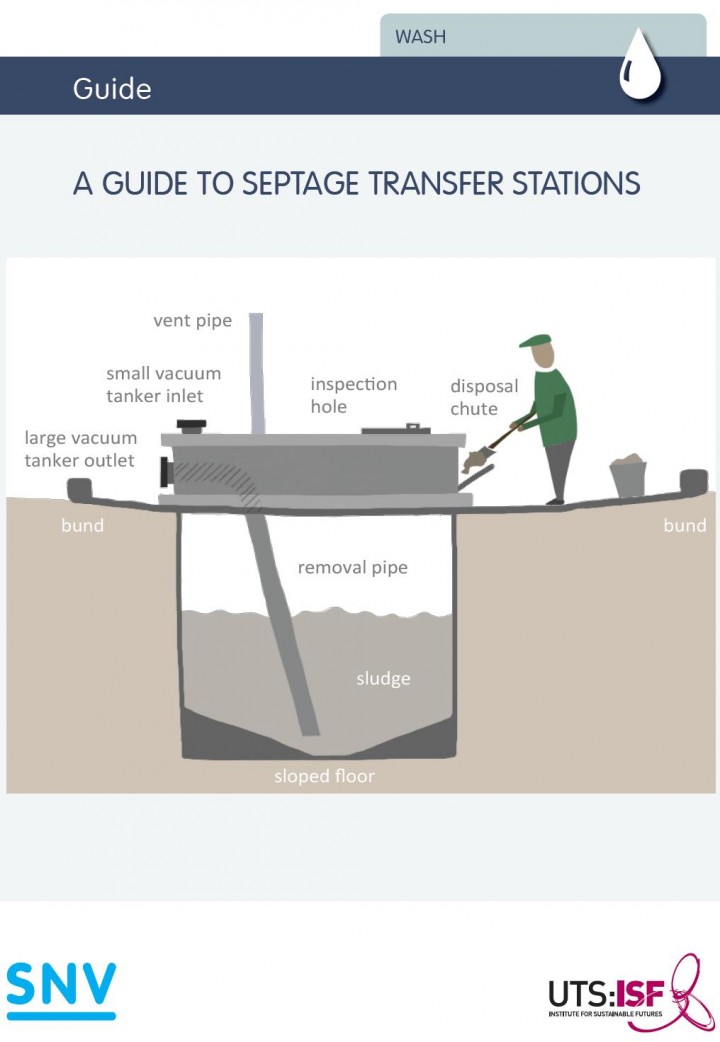
Published in: 2016
Pages: 26
Publisher:
Institute for Sustainable Futures - University of Technology, Sydney
Author:
ISF-UTS, SNV
Uploaded by:
Freya Mills
Partner profile:
Institute for Sustainable Futures - University of Technology Sydney
4558 Views
0 Downloads
Septage transfer stations have the potential to significantly reduce the amount of faecal sludge entering the environment by providing a local solution for septage disposal. Localised transfer stations shorten the time required for local operators to collect and transport septage, and they will be able to use smaller vacuum tanks that can navigate the densely populated residential areas. This guide provides information on the salient aspects of selecting, designing, building, operating and maintaining a septage transfer station.
Additional information
Prepared for SNV’s Urban Sanitation & Hygiene for Health and Development Programme (USHHD) by Pierre
Mukheibir (ISF) with technical inputs from Antoinette Kome (SNV), David Robbins, and Tanja Rosenqvist
(illustrations), Naomi Carrard, and Kumi Abeysuriya (ISF).
Please cite this report as: Mukheibir P. (2015), A guide to septage transfer stations. Prepared for SNV Netherlands
Development Organisation by Institute for Sustainable Futures, University of Technology Sydney.
Bibliographic information
ISF-UTS, SNV (2016). A guide to septage transfer stations. Institute for Sustainable Futures - University of Technology, Sydney
Filter tags
East Asia & Pacific English Faecal sludge treatment processes Guidelines and manuals















